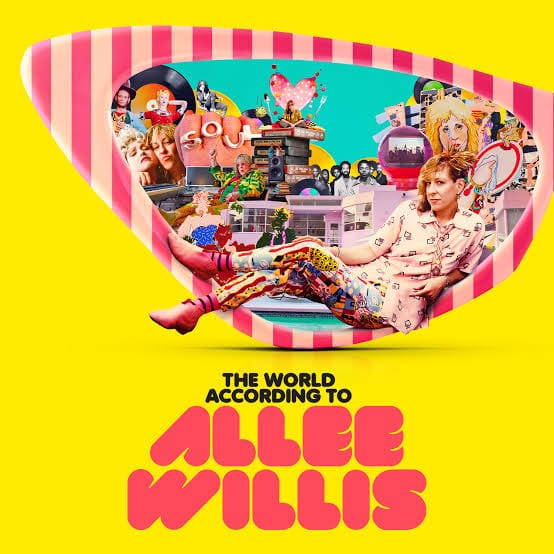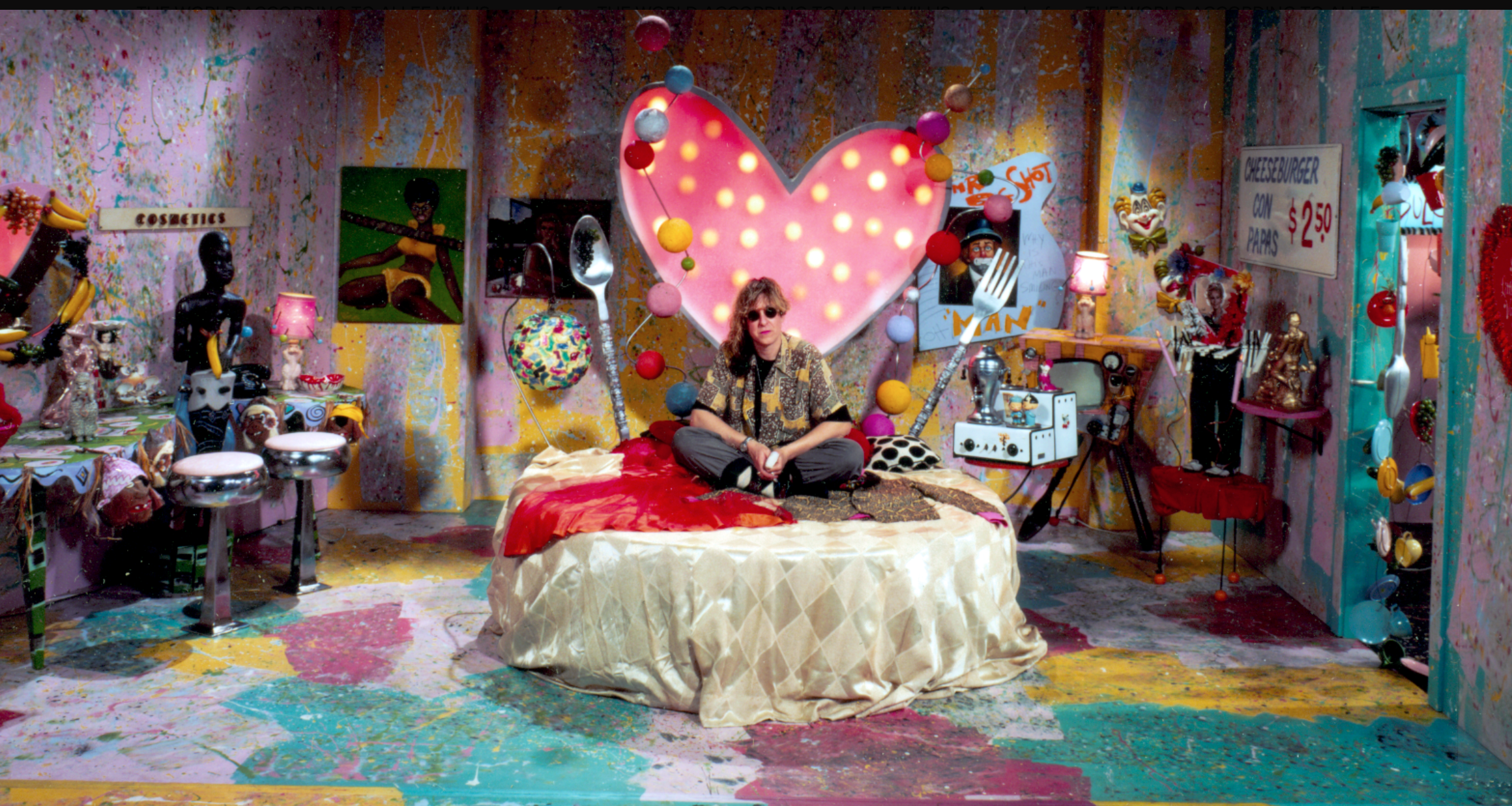10/10 Would Recommend: The World According to Allee Willis

Have you ever had a personal idol no one else you know has heard of? That's me and Allee Willis: Hollywood icon, visual artist, Grammy-winning songwriter, high priestess of kitsch, renowned girls' girl, online visionary. I first read of this magical dame in 1990, in a California-themed issue of Details magazine in which Willis chronicled the planning and execution of one of the many parties thrown at her pink Streamline Moderne house in the San Fernando Valley. Behold the opening paragraph:
So I'm planning 'Night of the Living Negligee II,' a hundred major babes in pajamas and no makeup who actually sleep over at my house, and my biggest problem is how do I top Tab? Last year I showed this video of Tab Hunter competing in a jitterbug competition in 1957 and when he wins Kathryn Murray hands him this trophy and says, "Tab Hunter—fifty milli0n women can't be wrong!" and at that exact moment my living room door slides open and in walks Tab holding the trophy. The girls hit the floor, Now everyone knows I'm throwing this party again and all I hear for a solid year is, "Who ya gonna get, Fabian?"
Details was still printed in black and white in 1990, but Willis's writing was full-tilt Technicolor: electric, conversational, peppered with an eclectic mix of celebrity names. I didn't know then that Willis had written hit songs for everyone from Earth Wind and Fire and Patti LaBelle to Cyndi Lauper and the Pet Shop Boys, or that she had art-directed some of my favorite videos on MTV, or that she was a great pal/aesthetic soulmate to my beloved Pee-Wee Herman. All I knew was that I would read anything this woman wrote.
And reader, she got Fabian. Listen, I was too young to know from Fabian (and Tab Hunter, for that matter), but I knew he'd been a teen idol. And I was riveted by the story's plot twist, in which Willis has her guests compete to "Win a Dream Date With Fabian" and Cassandra Peterson—aka Elvira, Mistress of the Dark—wins when she tells the party guests that she once dated, and was dumped by, Fabian. (As Willis writes, "A chant of 'revenge date!' goes up like fire spreading through a plastic factory.")
What I took from this Details story (besides the astounding reveal that someone had once dumped Elvira?!?), was that gonzo journalism wasn't just for dudes. Allee Willis was my Hunter S. Thompson, and though finding more of her work wasn't easy in those analog times, I managed to scrounge up some back issues of Details and, through her writing, was introduced to some formative female weirdness: the Del Rubio Triplets, Jerrie Thrill, Angelyne, and more. Keeping up with Willis became much easier down the road: She was an early Internet adopter whose kinetic visual style was made for flash animation, and an obsessive archivist. In 2009, she opened The Allee Willis Museum of Kitsch, an online gallery that confidently boasts "the largest assemblage of kitsch on the planet."

Alexis Spraic's documentary The World According to Allee Willis brings all of it to life in its portrait of a woman destined to become a cult figure simply because she was too much for her time and place. Willis began recording herself and those around her in 1978, and the footage that scaffolds the documentary shows someone who always knew she would be someone ("I was the original reality show") but who is often reckoning fitfully with what she can't be. Her talents and success were undeniable; and her height, presence, and exuberant fashion sense made her stand out in any room. But she was also a closeted lesbian and "girl songwriter" working in a deeply sexist, homophobic, and male-dominated subset of a larger deeply sexist, homophobic, and male-dominated industry. Willis's job involved selling herself as much as her music, and she knew what people did and did not want to buy.
That Willis was an utter original who could never show the world her full self is the tragedy that winds through the documentary like a holographic ribbon, skimming lightly over her successes and flashing neon-bright whenever Willis reflects on her life growing up in 1950s Detroit. She loved everything about her city, especially the music; but after losing her mother ("my protector") as a teen, she was left with an emotionally withholding father who seemed to see nothing in her but the failure to be a normatively feminine girl. (Suspicious of his daughter's devotion to the local hit factory, Motown Records, Willis's father offered these words when she graduated college: "Stay away from Black culture.")
There's a murderers row of actors, musicians, and other luminaries—Lily Tomlin, Paul Reubens, Patti LaBelle, Mark Mothersbaugh, Cyndi Lauper, Pamela Adlon, Brenda Russell, and Luenell are just a handful—who knew exactly who Willis was, and there's no dewy idealizing in their recollections of working (and often butting heads) with her. The same goes for Willis's longtime partner, fellow multimedia artist Prudence Felton (MTV oldheads will recognize her work) who speaks with a mix of pride and sadness of knowing that she knew that work would always be Willis's first love and top priority.
The artist's 2019 death was unexpected, but hardly unanticipated: Willis knew she would be gone well before the world caught up to her, and planned accordingly. The movie opens with a dizzying visual feast of her art, furniture, collectibles, and archives in the home that has been meticulously preserved ("like Graceland," says Bruce Vilanch). There are closets and cupboards and file drawers and hard drives, black velvet paintings and ashtrays and 8-tracks, and none of it is going anywhere. "I've always known that my final art piece would be someone putting together the trail I left behind," she says in a video clip. Like the pro she was, she created an afterlife as colorful as she was—and one that's as honest as she couldn't truly be.

